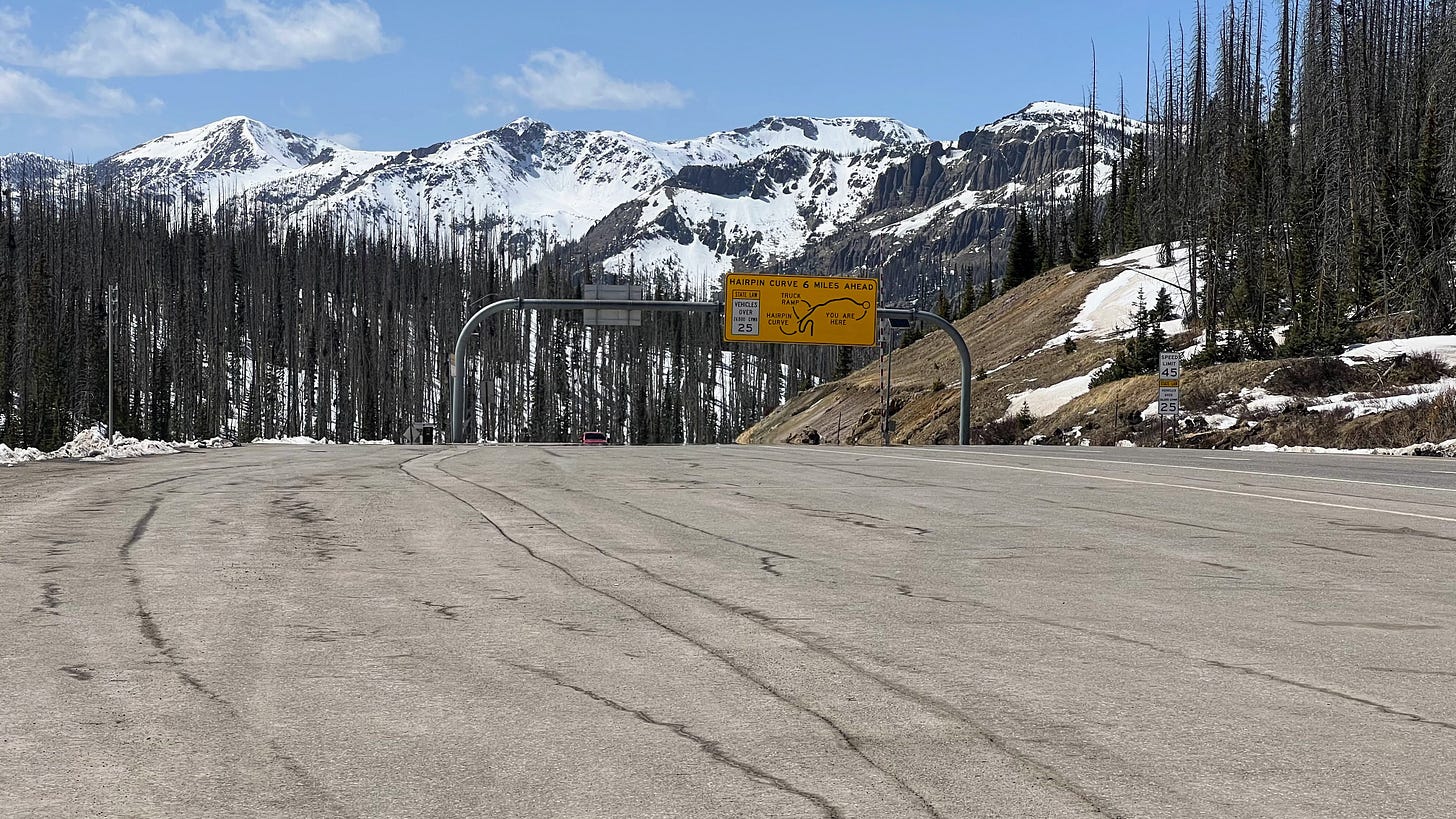“I come back to you now at the turn of the tide.”- Gandalf, Middle Earth, 3019
“Those were some really shoddy chicken wings.” Me, Durango, last week
So last week we got hit by a bot to this Substack account which threw me into a frenzy. And in addition to doing work for your United States Forest Service while writing this substack and recording the pods quite literally meant I fell asleep on the couch with every light on more than once in the last week. But like Gandalf after defeating the Balrog, I have returned once more.1
I’m writing to you a week removed from a trip to Southwest Colorado, where I spent a few days in Ute Country. If you’re new to this substack, my day job is that of a tribal liaison for the Forest Service where I do my best to ensure that our agency upholds its treaty and trust responsibilities with Tribes. If that sounds specific, it is. (It’s right out of the manual.) But what my real role is is to foster communication, get to know folks out here, and through my efforts help ensure that everyone enjoys the benefits of well-managed forests and grasslands.
I’ve had the great blessing since arriving out here to get to work with some absolutely amazing Indigenous nations. I don’t know everyone in each Tribe, but I like to think that I carry them with me in my heart. In all seriousness, I don’t think I could be a good liaison if I did not genuinely love and care for each tribe I work with on a deep and personal level. And because my kids are 2,000 miles away, the only way I can survive out here is by throwing myself into the work.
If you don’t know, Colorado is home to dozens of sovereign Indian nations who continue to be part of its story. While I don’t work with every tribe, among them are the amazing folks at the Comanche Nation (who I’ve previously written about), the Kiowa Tribe, the Cheyenne and Arapaho Tribes, the Northern Cheyenne Nation, the Northern Arapaho Tribe, the Pawnee Nation, the Jicarilla Apache Nation, the Ute Indian Tribe of the Uintah and Ouray Reservation, the Ute Mountain Ute Tribe, and the Southern Ute Indian Tribe, among others. I love working with all these folks who have become a real treasure to me.
Last week’s trip was a visit to the Southern Ute Indian Reservation, which is a stone’s throw from Durango. My friend Casey was resigning from her position and I wanted to ensure that I paid my respects to her and the Tribe by being at her career celebration. Casey, like so many other folks out here, has taken the time to teach me about Colorado, the stakes of ensuring that people know its Indigenous heritage, and like my other friends in other tribes, always made me feel welcome on the reservation.
I thought maybe in this case, I’d take you on a small historic journey with me. A couple starters: the Southern Ute Indian Tribe is one of two resident tribes in Colorado, meaning that their reservations lie within the state’s boundaries. A lot of times people will ask me, “whose mountain is this?” or “who owned that land?” Boy, can we have a field day with the answers to those questions. First, and I’m gonna simplify things here—prior to colonization, people belonged to the land and not vice versa (there’s so much more that can be said here but we don’t have the space). Also, these ideas imply that claims to land are static over time and space. They are not. So many peoples can claim the same space is important to their culture or history, because it’s true. I could point to a spot on a map and say “that’s Ute Country” or “that’s Kiowa Country” or “that’s Comanche Country” and be entirely correct. And finally, beware of verb tense. So many times we see Native folks linguisitically tied to the past simply by the words we choose to employ. All those tribes I mentioned earlier? Still here.
Anyway, if you’d like to learn more about Southern Ute history, the best place to start is their own website, which has a terrific history section.
I was also eager to visit because it meant driving through some of the most beautiful parts of southern Colorado.2 Leaving Pueblo meant that within a short time, I’d see a few of my favorite mountains, namely the Spanish Peaks and Mount Blanca. I’ve written on the Spanish Peaks before but one of the neat things about Blanca is that he always seems to have a different personality when I pass by. Some days he’s angry, some days he’s somber.3 But on Monday Blanca was peaceful and in a good mood. I always stop to say hello to him.
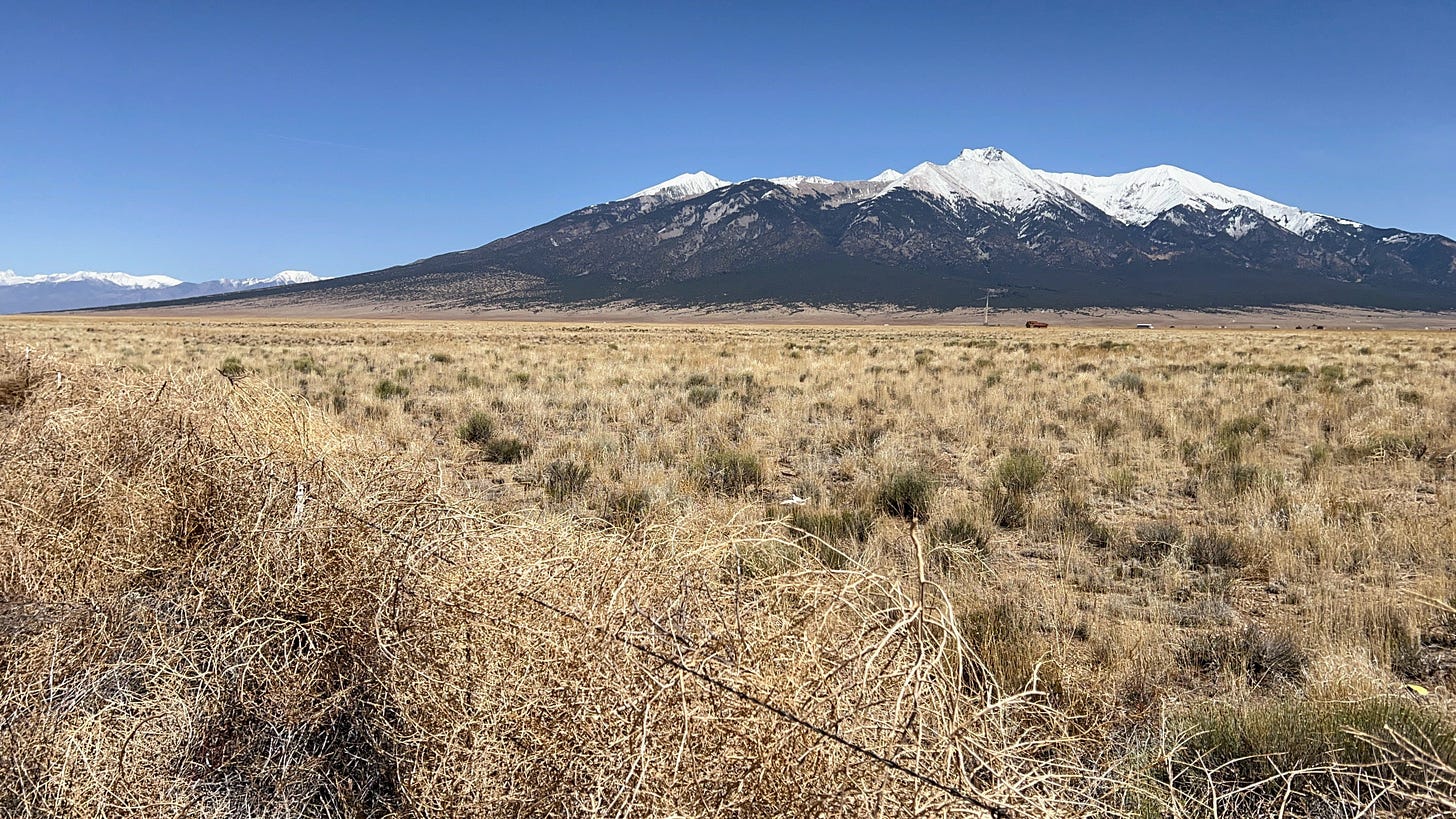
Sometimes you can’t actually get to the reservation, because the passes are all snowed in and won’t allow it.4 But when you can, you’re gifted with some of the best views you’ll see in all of North America. I always enjoy these trips. And while they are technically five hour drives, they always take way longer than that due to the fact that I stop for pictures. And beyond that, as one elder has always told me, it’s important not to only see these places, but to feel them as well. In my line of work, getting to know the people means getting to know the land as well.
Drive for a while longer and you’ll come to Wolf Creek Pass, where you’ll see the valley below, making it my favorite view in the entire state.
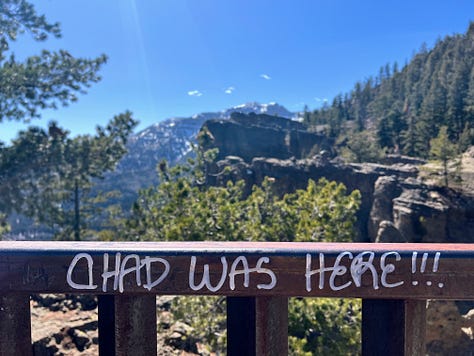
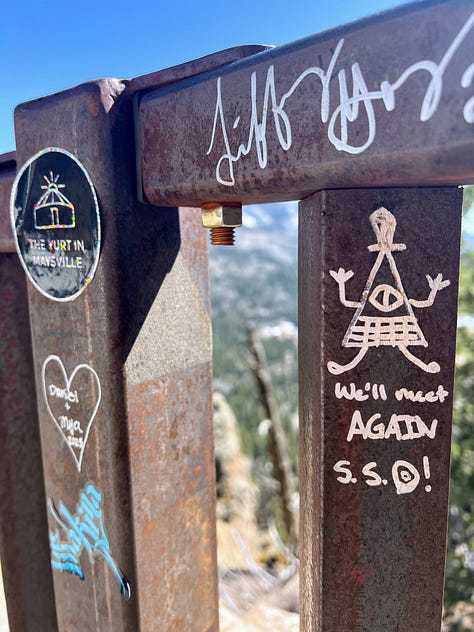
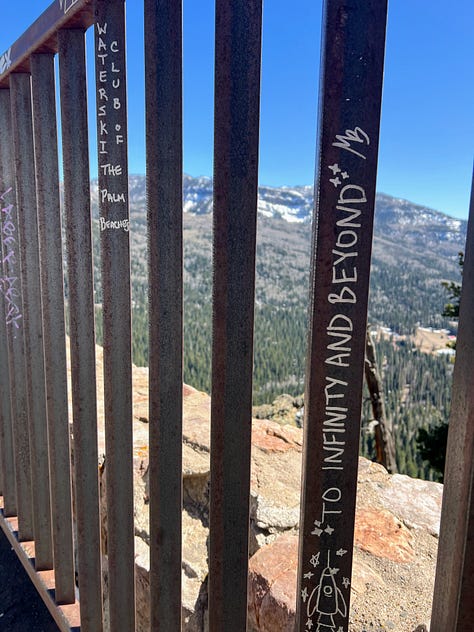
You’ll eventually pass through the little town of Pagosa Springs, one of many hot springs-laden towns in the state. Pagosa is a little different because it has the deepest hot spring in Colorado and unlike towns like Telluride or Breckenridge, it still feels like it has a sort of local flavor, though I worry that too will end.
And I don’t want to be a downer here, but a thing I keep in mind when I see these spaces are the radical transformations that have taken place here. According to the sign next to the river, “Pagosa” is said to meaning “boiling water” in an unnamed Indigenous language (I’m guessing Ute). I don’t know how accurate that is, but I can only begin to imagine what these places have meant and continue to mean to Tribal Members.
I usually stay in Durango when I visit the Southern Ute and Ute Mountain Ute reservations. I’ll do a post on the town later, but I have mixed feelings about it. It definitely feels “old west” with a large smathering of Silicon Valley boujie that drives me nuts. But I love the Durango Coffee Company, my favorite place for a cup of coffee in the state.
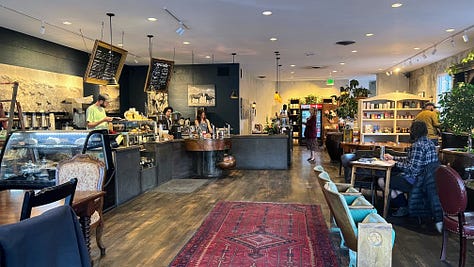

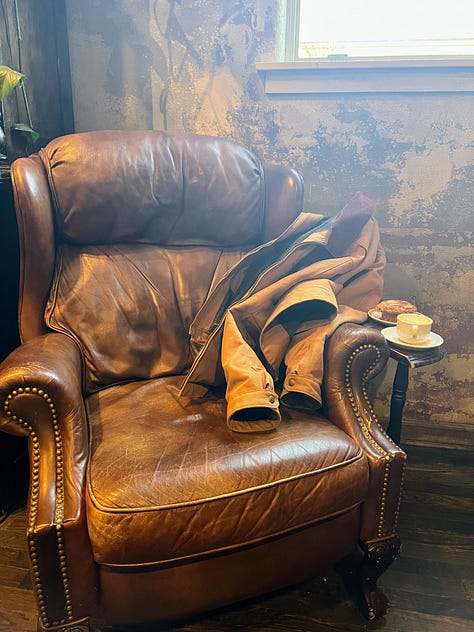
The following morning I drove down to Ignacio, where the Southern Ute Cultural Center and Museum is located. I’d been meaning to visit for the longest time, but could never quite make it during operating hours. This is such a phenomenal museum and definitely a must visit if you’re in southwest Colorado/northern New Mexico. I don’t like posting pics of museums since I think they are places that need to be experienced, but here are a few that show the hard work of the Tribe to tell its story.
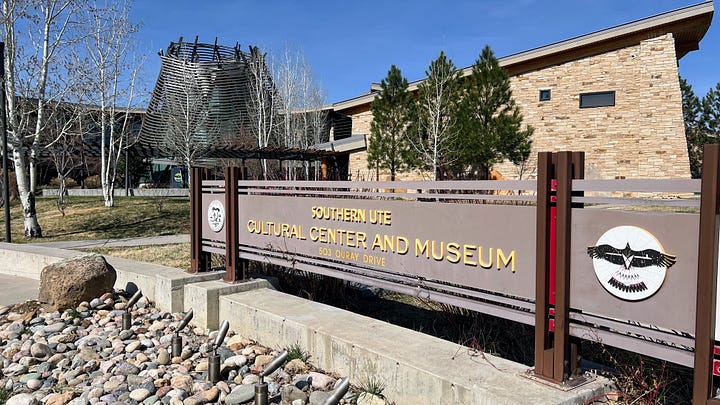
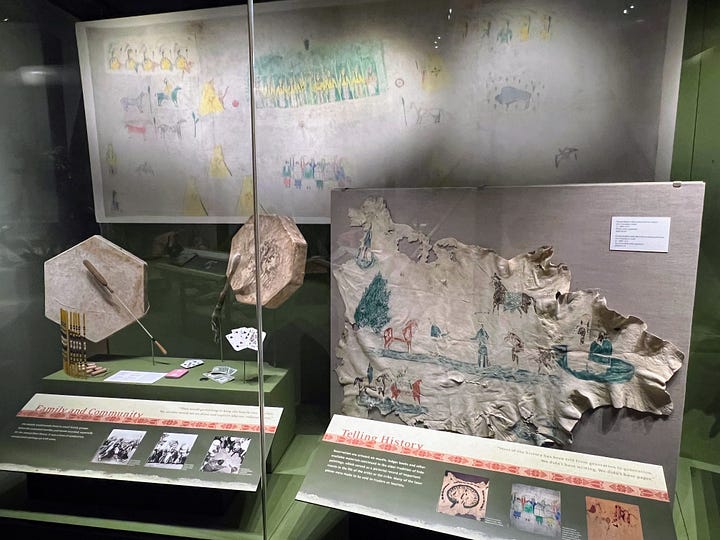
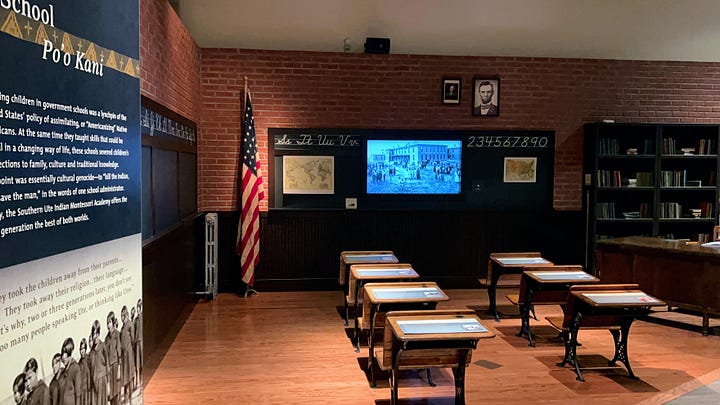

And one last thing- I get asked sometimes what the best tribal museums are. This never sits right with me. I think museums—especially tribal museums—are such intimate and vulnerable spaces. People are sharing within themselves and with you about their culture and history. Each one I’ve visited has been a gift and I mean that.
Finally, I got to attend my friend Cassandra’s career party and celebrate her a little bit. She has been a real friend to me since I arrived in Colorado and has worked hard to ensure that everyone can learn the Ute story. I’m only beginning that path, but I am thankful to walk it.
Finally, people ask me all the time, “how do I learn more about Tribal history?” The best place to start is at Tribal websites. Most Tribes have websites and history sections. Learn their histories from them. Then go exploring on your own. And absolutely visit Tribal museums, libraries, and archives. Folks want to share their stories. And besides, history is cool.
Jason
If you like what you’re reading and you wanna help support the mission here and help us grow into a national voice, the best thing you can do is upgrade to a paid subscription. That will help us continue the mission and expand what we’re doing. Regardless, I’m really glad that you’re here and part of this community.
In this case, I endured some chicken wings that were supposed to be Jamaican jerk, but I forgot when I ordered them that I was in Colorado, so really they were just wings covered in soy sauce because this is the state where the idea of “ketchup is spicy” originated. Seriously, at some point I’m going to have to do a breakdown of the food in this place because somehow this is not well known outside its walls.
Note to Denver residents: southern Colorado is that part that of Colorado south of Denver. Moving on.
Why he? Because the Navajo consider Blanca to be a grandfather mountain.
Perhaps the Mines of Moria would be better?




